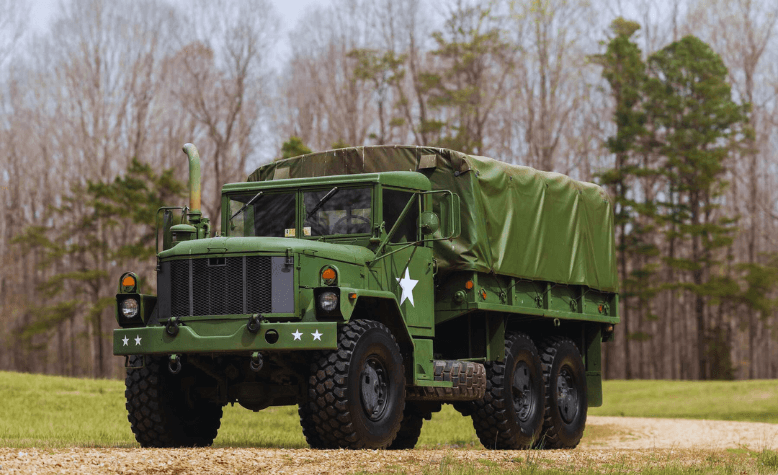Military Belt Essentials: Gear Up Like the Pros!

A military belt is a robust waist belt designed for use by soldiers. It often features pouches and attachments for gear.
Military belts are essential accessories in a soldier’s kit, combining functionality with durability to withstand tough conditions. They serve not only to keep pants up but also as a platform for carrying essential equipment like ammunition pouches, holsters, and other tactical gear.
These belts are typically made from high-strength materials like nylon or reinforced fabric, to endure the rigorous demands of military operations. Their design allows for quick access to tools and accessories, which is critical in combat situations.
Adjustable for comfort and load distribution, military belts are versatile, supporting soldiers across diverse environments and missions. The importance of these belts in a military uniform cannot be overstated as they provide a balance between comfort, accessibility, and readiness.
The Role Of Military Belts
Functionality Of Military Belts
Military belts have a critical job: to provide a reliable platform for carrying equipment. They must be able to support an array of gear, such as holsters, pouches, and other essential tools that might be required in the field. Often, these belts are designed to integrate with load-bearing equipment or to enhance the distribution of weight across a soldier’s body to ensure balance and mobility.- Carrying Capacity: Designed for carrying essential items like ammunition pouches, first-aid kits, and radios.
- Quick-Release Mechanism: Allows for rapid removal in emergency situations.
- Integration: Compatible with other tactical gear and attachments.
Importance Of Durable Materials
Due to the intense conditions of military operations, the construction of these belts is paramount. The most effective military belts are typically made from high-strength materials such as nylon or reinforced polyester. These materials provide resilience against wear and tear and are known for their longevity and ability to withstand harsh environments. A durable belt is a dependable partner in the field, standing up to the rigors of combat and the strain of carrying heavy equipment.Key Features To Look For
Selecting the right military belt involves considering a range of features that enhance its functionality:| Feature | Description |
|---|---|
| Adjustability | Fits a variety of waist sizes and accommodates layers of clothing. |
| Buckle Strength | Resistant to breaking or coming undone during critical moments. |
| PALS Webbing | Allows for modular attachment of gear and pouches. |
Essential Gear Attachments For Military Belts
Holsters For Sidearms
Selecting the right holster is paramount for quick draw capabilities and secure sidearm storage. A good holster must offer:- Resilience against harsh conditions
- Adaptability for ease of access
- Retention features to prevent accidental loss
Pouches For Ammunition And Supplies
Ammunition and essential supplies need to be within arm’s reach, making pouches an indispensable attachment. Items for immediate use include:| Item | Function |
|---|---|
| Magazine Pouches | Quick ammunition access |
| Medical Kits | Emergency health response |
| Utility Tools | Versatile problem-solving |
Utility Attachments For Multi-purpose Use
Utility attachments add a layer of preparedness for various scenarios. The following are must-haves:- Multi-tools for handling unexpected challenges
- Flashlights for illumination under low visibility
- Carabiners for carrying additional gear or securing items
Customizing Your Military Belt For Optimal Performance
Proper Fitting And Adjustments
Ensuring a perfect fit for your military belt is paramount. A belt that’s too loose jeopardizes your agility, while one that’s too tight hinders mobility and can be uncomfortable over long periods. Here’s what you need to consider for optimal fit:- Know your waist size: Measure accurately for a snug fit that allows for a full range of movement.
- Adjust as needed: Look for belts with adjustable features that allow for quick alterations to suit your body and layers of clothing.
- Testing the fit: Before deploying, test your belt in various scenarios to ensure no slippage or pinching occurs.
Compatibility With Other Gear
Your belt is part of a larger ecosystem of gear. Compatibility with pouches, holsters, and packs is essential. Follow these pointers to ensure seamless integration:- Verify PALS/MOLLE compatibility for attaching pouches and accessories.
- Confirm that your belt works with your holster and does not impede weapon draw.
- Ensure that packs or rucks attach without disrupting the weight distribution.
Personalizing For Specific Mission Needs
Every mission has unique challenges, and your belt setup should reflect that. Personalization is key to mission success. Here are aspects to tailor:| Mission Type | Essential Gear | Customization Tips |
|---|---|---|
| Reconnaissance | Binoculars, maps | Lightweight setup with quick-access pouches |
| Combat | Ammunition, grenades | Reinforced areas for heavy gear and armor compatibility |
| Rescue Operations | Medical kits, ropes | Securely attached medical pouches and utility loops for carabiners |
Maintenance And Care Of Military Belts

Cleaning And Storage Tips
Keeping a military belt clean and properly stored is fundamental. Start by removing any attached pouches or gear. Use a soft-bristled brush and a mild soap solution to gently scrub away dirt and grime. For tougher stains, a specialized fabric cleaner may be required. Ensure the belt is thoroughly dried before storing to prevent mildew and deterioration. Store in a cool, dry place away from direct sunlight to maintain the integrity of the material.- Avoid harsh chemicals: These can damage the belt’s fabric and stitching.
- Avoid excessive heat: High temperatures can warp metal components and weaken fibers.
- Roll or hang: For storage, roll the belt gently or hang it to prevent deformations.
Inspecting For Wear And Tear
Regular inspections are vital for identifying potential issues early. Examine your belt for signs of fraying, loose threads, or wear around holes and buckle attachments. Check metal components for rust, corrosion, or damage. Treat minor issues promptly to prevent further deterioration.- Inspect after each use, especially after exposure to harsh environments.
- Pay special attention to load-bearing areas and attachment points.
- Replace the belt if damage impairs its structural integrity or functionality.
Extending The Lifespan Of Your Gear
Meticulous care for a military belt will undoubtedly extend its service life. Use the belt as intended; avoid overloading which can strain and prematurely wear out the material. Implementing a routine maintenance schedule ensures that your belt remains in prime condition, ready to support your mission at a moment’s notice.| Maintenance Task | Frequency |
|---|---|
| Cleaning | After each significant use, or monthly |
| Inspection | Weekly, and after exposure to challenging conditions |
| Storage Check | Every 3-6 months |
Training And Drills For Efficient Use Of Military Belts
Practical Exercises For Quick Access
Achieving speed and dexterity with a military belt necessitates a hands-on approach. Here are key exercises crafted to shave seconds off gear retrieval times:- Blindfolded Gear Placement: Identifying and reaching for gear without sight sharpens spatial awareness.
- Timed Drills: Repeated timed retrieval of gear from the belt pushes the pace and builds muscle memory.
- Obstacle Navigation: Navigating through obstacles while accessing gear tests agility and accessibility under duress.
Techniques For Smooth, Silent Operation
The ability to operate gear in stealth mode is crucial for mission success. Soldiers must master the following techniques:- Soft Hand Touch: Gentle yet firm grips minimize noise.
- Strategic Placement: Positioning gear to prevent clanging.
- Regular Maintenance: Keeping metal parts oiled for silence.
Integrating Belt Use With Overall Tactical Training
Military belts don’t work in isolation—they’re part of a soldier’s broader tactical framework. Integration into overall tactical training can be achieved through:| Exercise | Purpose | Outcome |
|---|---|---|
| Live Exercise Scenarios | Simulating field conditions | Realistic practice in using belts as part of tactical maneuvers. |
| Team Drills | Enhancing group coordination | Ensuring seamless gear access among squad members. |
| After-Action Reviews | Analyzing belt use effectiveness | Feedback loop for improvement in belt handling. |

Frequently Asked Questions
What Are Military Belts Called?
Military belts are often referred to as “web belts” or “duty belts. ” They are designed for durability and functionality, catering to various military needs.
What Battle Belt Does The Military Use?
The military commonly uses the MOLLE (Modular Lightweight Load-carrying Equipment) battle belt for its versatility and customization options.
Does The Military Use Belts?
Yes, military personnel typically wear belts as part of their uniform for appearance, carrying equipment, and uniform stability.
What Is A Military Riggers Belt?
A military riggers belt is a sturdy, adjustable belt designed for quick fastening and load-bearing capability, often used by military personnel.
Conclusion
To sum up, military belts are a blend of function and style. They offer durability and versatility to suit various needs. Whether for tactical operations or everyday wear, these belts provide reliability. Opt for the right military belt, and experience a noticeable difference in performance and comfort.







